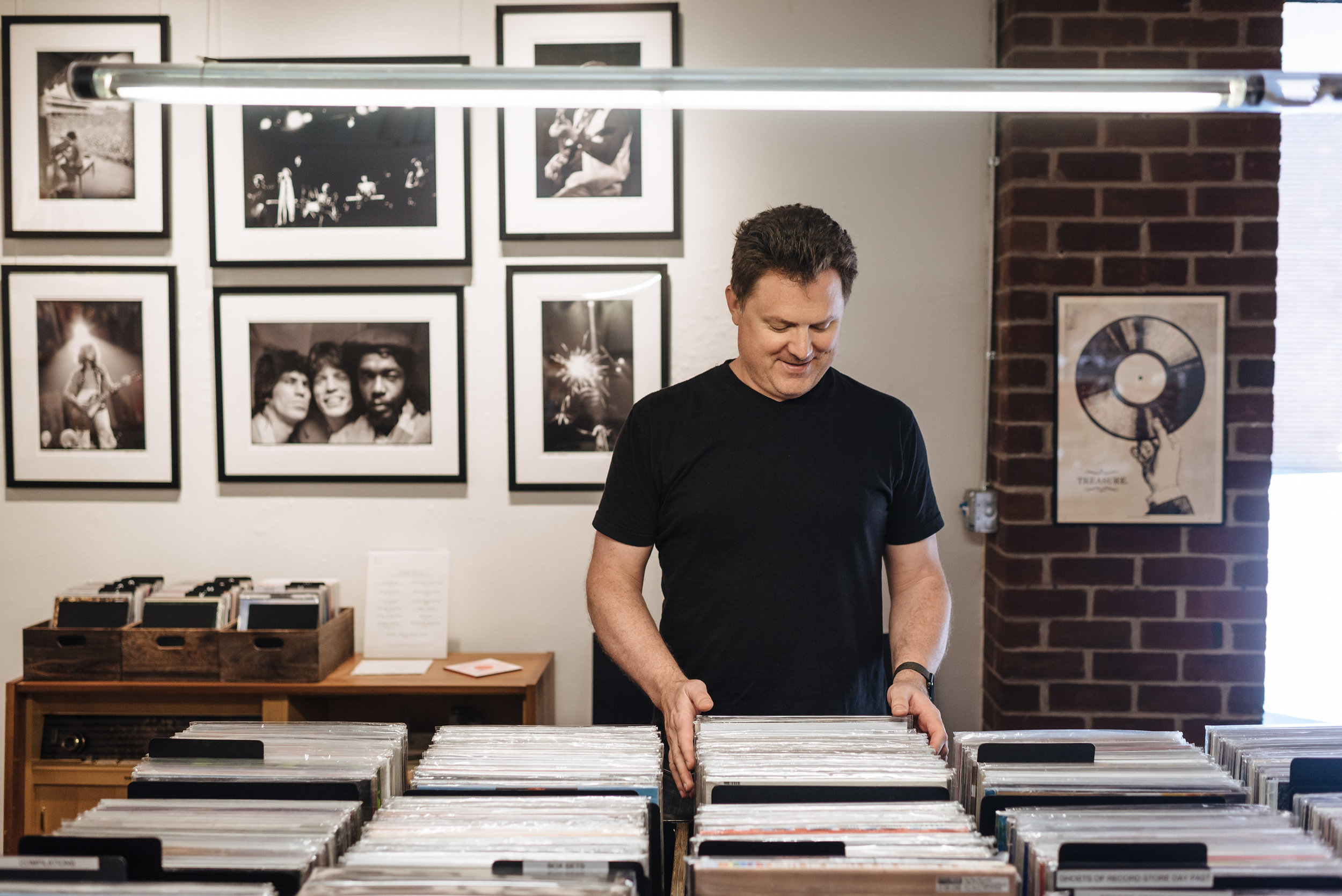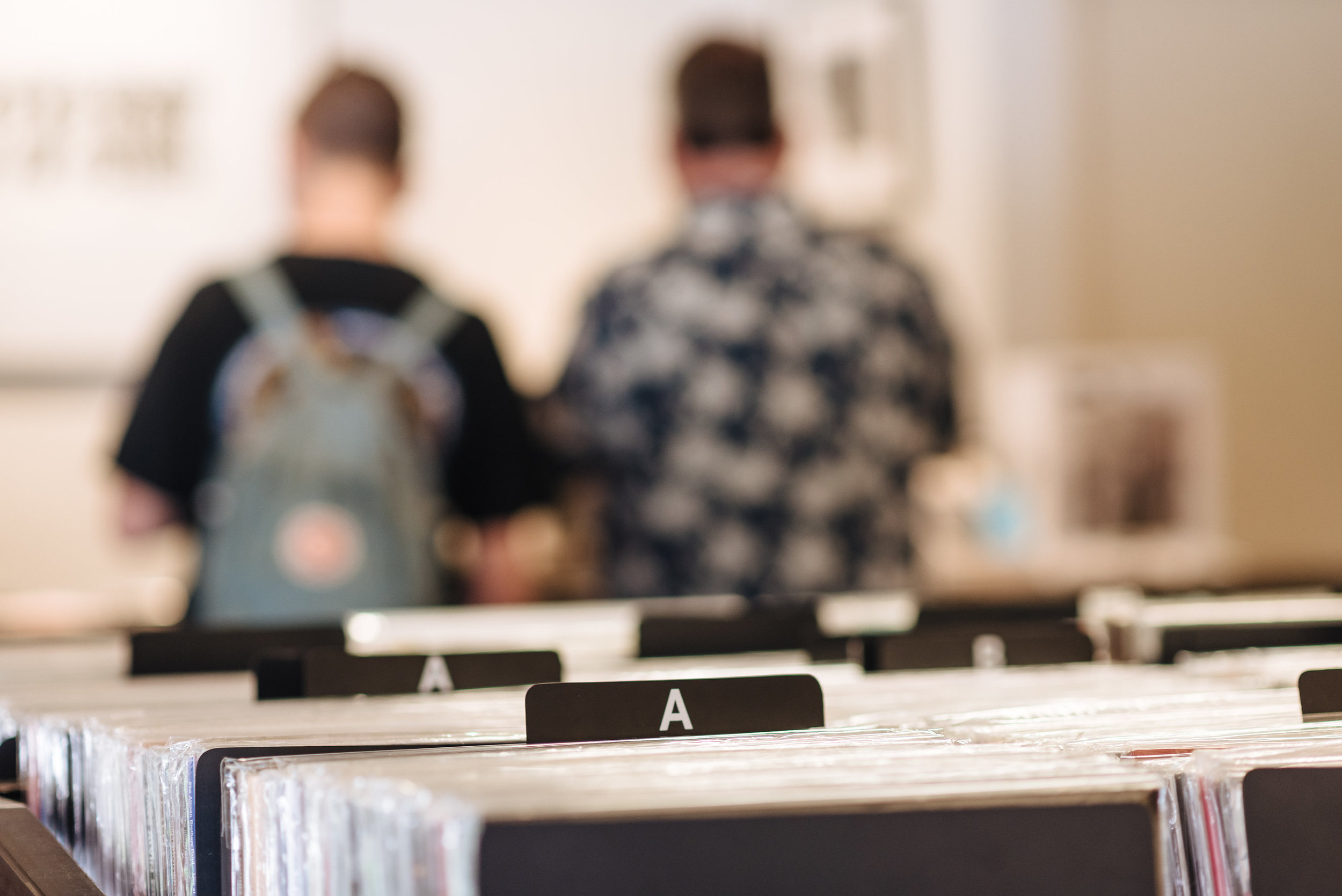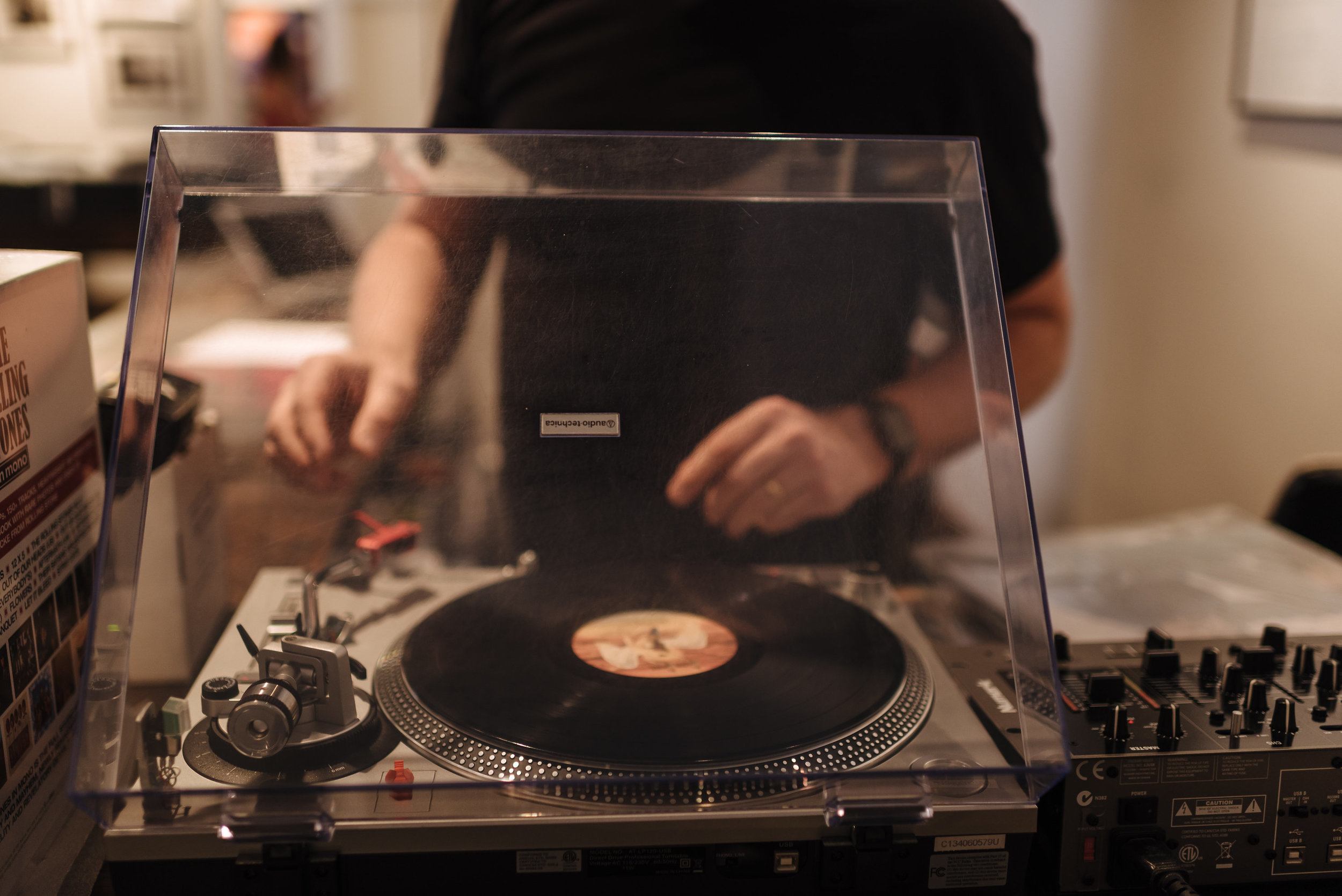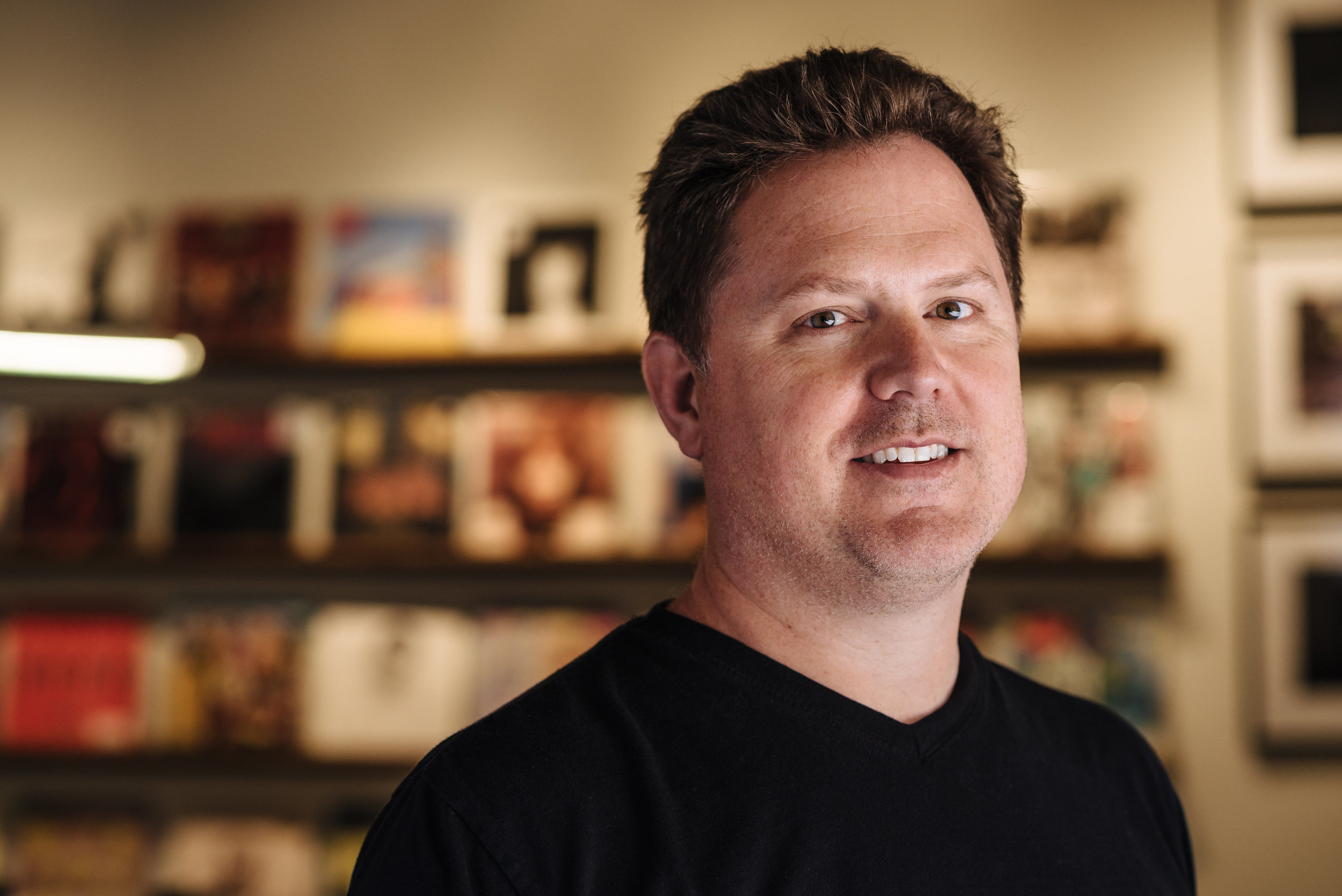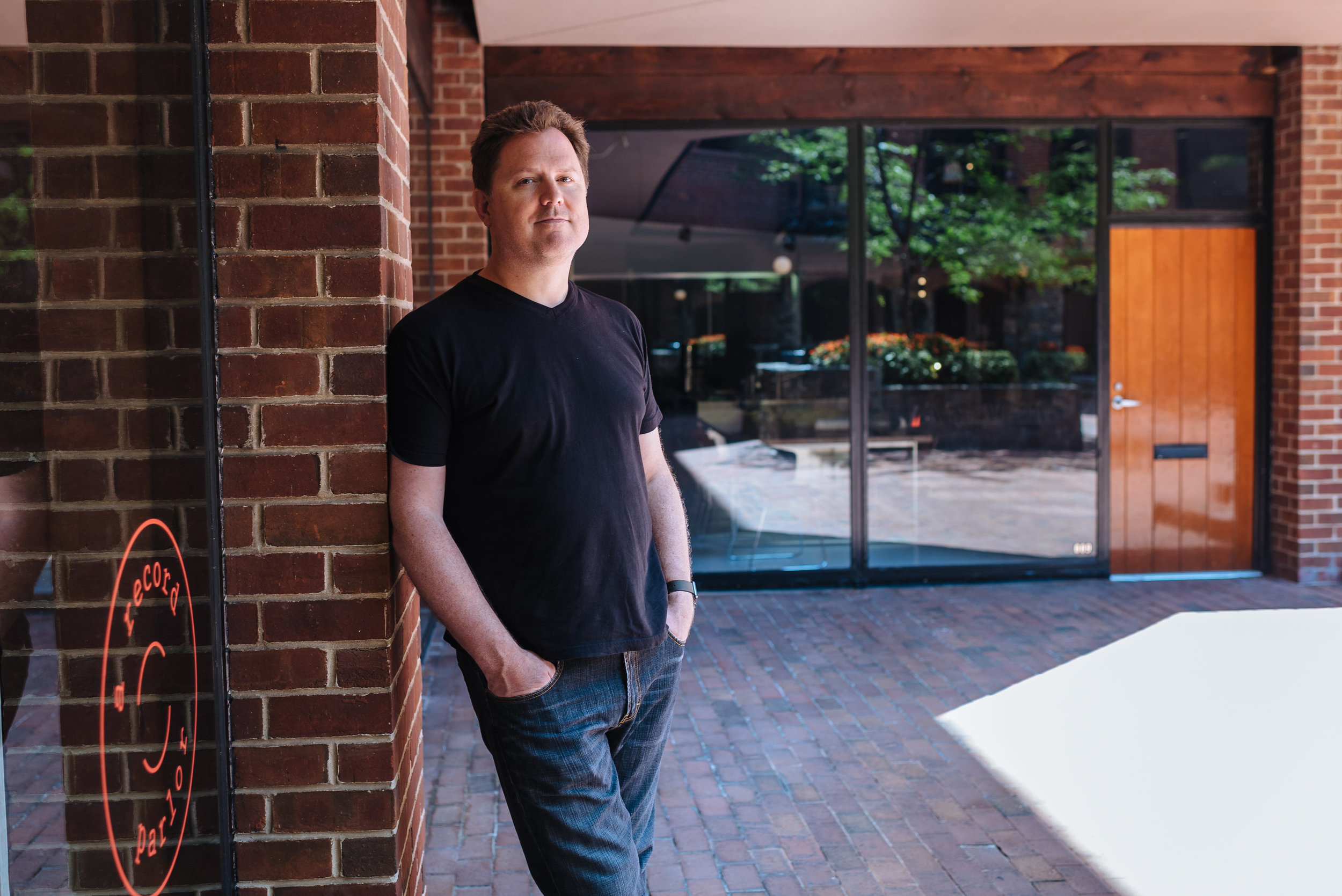‘I Reject the Notion That Music Today Isn’t Good’
Rob Norton caught the bug in his parents’ basement, wailing on the drums he’d taught himself how to play while listening to entire sides of vinyl records on his dad’s old record player.
‘I would buy the record in the shopping mall, go home and put it on, pull out the lyric sheet, read all the liner notes, listen to the music and read the lyrics, see who’s playing and who engineered the album and who produced it. It was the whole package.’
Years later, Rob was in a very un-rock n’ roll job, working as a marketer in the pharmaceutical industry. He’d reached the point in his career where he could afford to take a risk—the idea of opening his own record store swirling around for a decade.
‘I’d thought about it for a while, and it was serendipity. There was a point where I didn’t even think it was possible to open a record store because they were all closing. And then they started opening again.’
He looked for a space—mostly in Adams Morgan and the 14th Street corridor—but never found the right combination of place and price. When a space suddenly became available in Georgetown’s Canal Square, Hill & Dale was born.
‘When people think about record stores, they think about the other side of town. But it’s kind of ideal here. It’s a big space just off of M Street and the tourist traffic is huge. The only barrier is sometimes people assume our prices are going to be higher because we’re in Georgetown, but my prices are just as good as anywhere else. And we love it here.’
Hill & Dale has a clean, white aesthetic, each row of records—new, only—in alphabetical order, never cramped. Rob says his best-selling record is Miles Davis’ Kind of Blue, unusual for record stores, whose customers generally favor rock. The wide-ranging selection reflects Rob’s tastes, and the only records Hill & Dale doesn’t carry are classical.
‘That’s just a function of they don’t sell as quickly as I would need them to and they tend to be on the higher end in terms of price. I wish we had them.’
The customers are just as diverse as the records, from high schoolers to guys in their mid-40s.
‘People have a pre-conception that it’s going to be hipster-type people and that’s actually not true. For Millennials, it’s very social. They’re buying in groups, clearly with the intent of listening to the record together. Or they come in and look and talk about it, and it’s different from any digital experience. People in their mid-30s and 40s are just looking for their records and they don’t want to discuss anything.’
But when customers do want to talk music, they really want to talk. A classic rock guy by nature, Rob says he’s also learned a lot about jazz since he opened Hill & Dale. Still, he’s constantly being taught by customers who know more than him.
‘That’s the cool part. A couple of weeks ago there was a big Elvis collector and he taught me about that. There’ll be people who come in who are big Zeppelin collectors and they’ll know more than me. It’s not a contest. But the Beatles, The Rolling Stones—not many people are going to teach me about that.’
Rob’s personal record collection tops out at over 500. He owns nearly 5,000 CDs, which he started collecting in high school, before vinyl came calling yet again.
Asking a record store owner to pick his most prized vinyl is like asking a mother to pick her favorite child, but Rob’s criteria is different from most collectors.
‘Some people will have a highly collectible first pressing of the Beatles’ White Album. I don’t really have stuff like that. I think my most prized records are ones that aren’t terribly valuable, but that I just played a lot and enjoyed. I have many copies of Who’s Next.’
Rob gets hundreds of customers a day on most weekends—Steven Tyler once peering through the windows. It’s been a learning lesson for someone who’d never before owned his own business.
‘The store never goes away, and customers are coming whether you’re on vacation or not. I have to keep what I offer new and interesting—which I find fun. But most of the people who come in are happy to be here. We’re selling something people like; they don’t need records.’
Why they like them varies. For some, it’s tactile—the ability to touch the music. Others love the warmer sound quality. When music is digitized, Rob says it’s turned into 1s and 0s, and a lot of information is lost.
‘If you’re listening to music through ear buds on a phone, a lot of people can’t tell the difference, or don’t care about the difference because they’re listening to something that may not have been recorded very carefully to begin with. But if you do care, and you care about a Beatles record that was recorded in analog, then you definitely want to be listening to it on vinyl.’
Records have made a comeback, but some of Rob’s peers insist music just isn’t what it used to be. He isn’t having any of that.
‘I completely reject the notion that music today isn’t any good. You hear people my age say, ‘We had classic rock, we had Jimi Hendrix.’ I just think it’s different. The way it’s presented is different and it’s a harder business to be in. Artists can’t get rich quick.
‘Look at Kamasi Washington, a jazz artist who performs with an incredible band and has appeared on Kendrick Lamar’s records. He’s amazing. You can’t listen to those artists and say music today sucks. No way. What they’re doing hasn’t been done before—which is the way people felt in the 60s with rock n’ roll.’
Rob feels similarly about Lana Del Ray, Sia, Mac DeMarco, and Drive-By Truckers—artists who prove music is alive and well.
So, too, is Rob’s dream.
